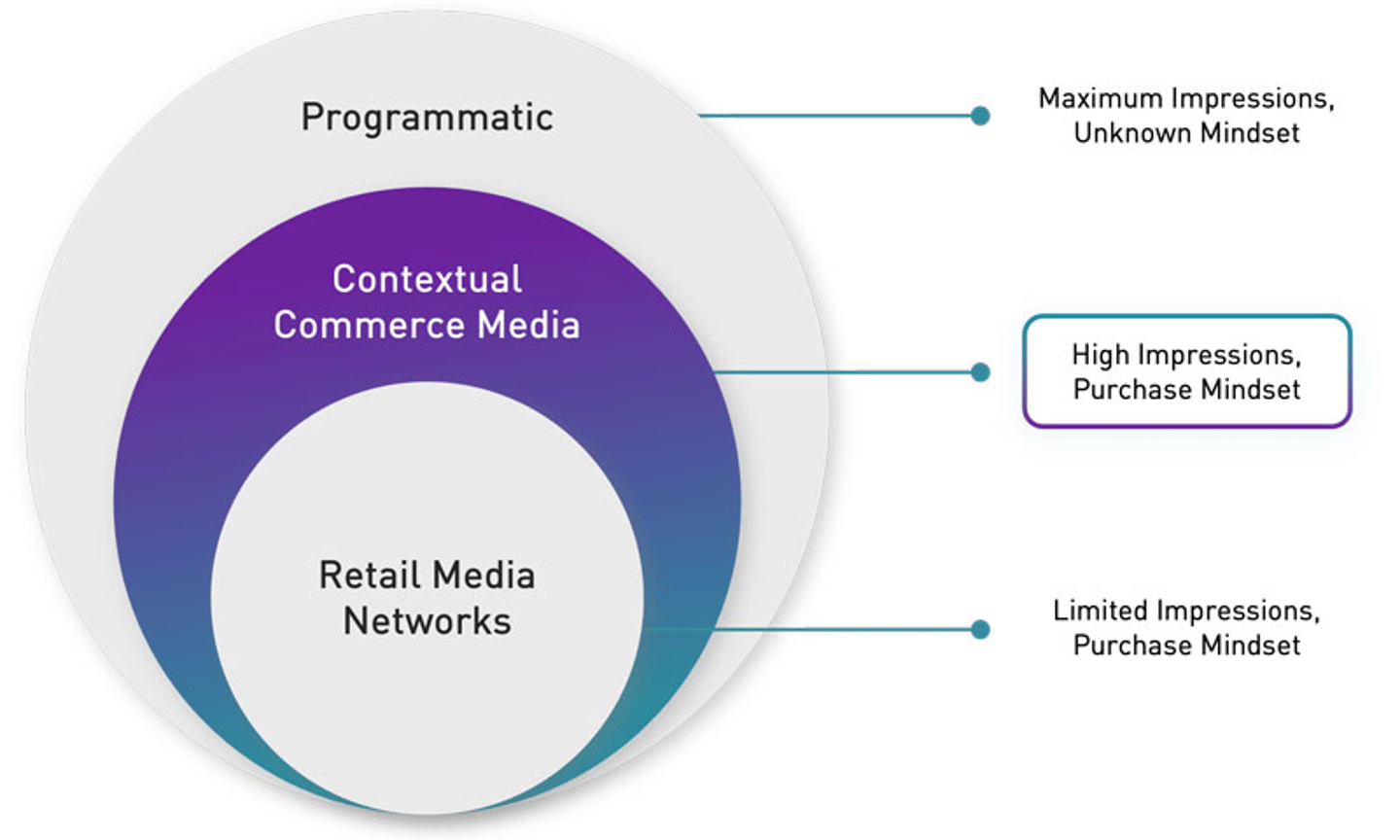Contextual Commerce Media Matters Now More Than Ever
This last year, it’s felt like the digital media and advertising landscape has transformed dramatically. We’ve seen Google pull back from third party cookie deprecation, increased consumer privacy concerns, and greater risks in brand safety.
One constant, however, has been the need for a brand to be able to reach, engage, and inspire a consumer to take an action. Today, more than ever, how a brand shows up matters.
In the ever-changing digital landscape, reaching consumers in the right mindset is key.
What Is Contextual Commerce Media?
Contextual commerce media is an offshoot of commerce media that enables more engaging experiences by leveraging contextual relevant content to reach consumers in the right mindset thereby driving better outcomes.
It’s about reaching the right audience, at the right time, with the right mindset.
Contextual commerce media serves as an alternative to programmatic media’s play of reaching as many people as possible (oftentimes to the detriment of the consumer), and retail media networks (RMNs) who have first-party data, but access to a pool of primarily later-stage, on-site customers.
Contextual Vs. Programmatic
- Efficiency
Contextual commerce media leaves way for a potential higher level of media efficiency than programmatic because it reaches audiences at specific, intentful moments in their purchasing journey. By getting in front of inspired customers rather than customers who have wavering or irrelevant intent, contextual commerce media works to eliminate wasted impressions. This helps put ad dollars to a more strategic use, and can help increase media efficiency.
- Intent
Programmatic advertising strives for maximum impressions by reaching as many potential consumers as possible - all with unknown mindsets. Contextual commerce media engages consumers with the right mindset and intent by delivering brand messaging and media in relevant environments - like featuring advertisements for specific ingredients directly within recipe pages.
- Reach
Contextual commerce media aims to go beyond later-stage, on-site customers to reach a larger pool of new and lapsed shoppers. Advertisers that leverage contextual commerce media can activate media at scale to extend commerce media efforts beyond the retailer environment. For example, Chicory recently worked with a popular multivitamin company to help them reach a health-aware audience on off-site platforms, such as recipe pages - results showed over 33% of shoppers reached in the campaign were new and lapsed.
Contextual Relevance and Brand Safety
Brand safety refers to the upkeep of your brand’s reputation when you advertise online. In other words, how is the content, quality, and contextual relevance of the ad maintaining your product and brand ethos?
Advertising within contextually relevant environments can help to mitigate your brand safety risk. This is especially important when you consider recent growth in:
- Political unrest
- Misinformation and made-for-advertising sites
- Objectionable content
Consumer buying journeys are driven by awareness, consideration, and opportunities for conversion - ensuring your contextual relevance and brand safety within each one of those steps will be a critical strategy moving forward.
Considering Contextual Commerce Media
It’s clear: Contextual commerce media is the key strategy for CPG brands looking to strategically target consumers and drive incrementality.
Chicory leverages contextual commerce media to help brands and agencies:
- Maintain contextual relevance in light of privacy concerns
Consumer privacy concerns continue to grow. 86% of marketing professionals reported that their brands are very strongly or strongly considering growing consumer privacy concerns in their own advertising strategies.
- Limit wasted impressions and protect brand safety
Placing your brand in an irrelevant environment will only reach passive consumers, running the risk of wasted impressions. Contextual commerce media enables brands to serve messaging and content on contextually relevant environments, so it helps limit those wasted impressions, ups media efficiency, and prevents risks existing on irrelevant, brand-volatile environments.
- Reach new and lapsed customers
Retail media has seen massive growth over the last few years. For the most part, RMNs have had valuable insights into on-site shopper activity. Still, they've simultaneously run the risk of reaching the same buyers off-site as they do on-site - using first-party data to target programmatic display. In the face of this, Chicory acts as a complement to your retail media strategy, helping retailers reach new and lapsed shoppers in high-intent environments.








